Sawbwa resplendens
Etymology
Sawbwa: from a native word meaning ‘prince, chief’.
resplendens: from the Latin resplendens, meaning ‘shining, glittering’.
Classification
Order: Cypriniformes Family: Cyprinidae
Distribution
Endemic to the isolated mountain lake of Inlé and associated watershed in Shan State, eastern Myanmar.
Type locality is ‘Inlé Lake, Southern Shan States, Myanmar’.
The species is currently listed as ‘Endangered’ on the IUCN Red List due to a significant decline in the wild population. Unsustainable agricultural practices in and around the lake have caused increases in sedimentation, eutrophication, and pollution along with a reduction in surface area of more than 30% between the years 1935-2000. Non-native, predatory Parambassis and Tilapia species have been introduced for farming, while collection for the aquarium trade may also be exerting a negative effect.
Habitat
Lake Inlé lies in a karstic valley almost 900m above sea level in the Shan Plateau region and is home to many endemic animals including nine species of fish and numerous gastropods. The water is clear, shallow (2-3 metres deep in most places) and has a very fertile, loamy substrate, although it can be muddy and turbid around the margins.
It is famed for its stilted villages and local fishermen known as Intha who row their boats using only one leg. These people, thought to have migrated from the south of Myanmar in the late 1300s, use naturally-occurring floating ‘islands’ consisting of tangles of various plant species as gardens.
These islands form a wide raft around the lake margins, rising and falling with the water level, and have come to form the habitats of many fishes which take shelter among the tangle of roots and plant stems at their base. Macrophytes also grow densely in places.
S. resplendens occurs throughout the lake, in both clear and turbid water, but is mostly collected around the vegetated margins.
Maximum Standard Length
25 – 35 mm.
Aquarium SizeTop ↑
An aquarium measuring 60 ∗ 30 cm or larger should be the smallest considered.
Maintenance
Perhaps most suited to a heavily-planted set-up, preferably with a dark substrate. The broken lines of sight that exist in such a display allow it to display natural behaviour as well as helping to reduce skittishness.
Floating plants are a useful addition, and water flow should not be too strong.
Water Conditions
Temperature: 18 – 22 °C
pH: 6.0 – 8.0
Hardness: 54 – 268 ppm
Diet
Likely to feed chiefly on small invertebrates and other zooplankton in nature. In the aquarium it will accept dried foods of a suitable size but should be offered regular meals of small live and frozen fare such as Daphnia, Artemia and suchlike.
Behaviour and CompatibilityTop ↑
Peaceful towards other species but not an ideal choice for the general community aquarium due to its small size and aggressive interactions between rival males. It does best when maintained alone or with similarly-sized, active species that enjoy comparable water conditions.
Though gregarious by nature it exhibits shoaling rather than schooling behaviour. Males tend to be engaged in a continual battle for dominance, particularly when maintained in small numbers or in the presence of few females.
The best way to minimise this behaviour is to purchase more females than males; a ratio of 4:1 or more being ideal. Unfortunately females can be hard to find on sale because exporters often prefer to ship only the more colourful males.
At the very least try to purchase sexed pairs or use a larger tank arranged in such a way that many broken lines of sight are provided.
Sexual Dimorphism
Can be sexed by colour pattern. In males much of the head and caudal-fin lobes are red, and the flanks have a bluish sheen. Females are uniformly olive to pale brown with the exception of a dark marking anterior to the anal-fin.
Reproduction
Naturally deposits eggs among aquatic vegetation, filamentous algae, or on the underside of broad leaves, but in the aquarium synthetic spawning mops can also be used if you prefer. Apparently the most favourable results are obtained when a group of adults is maintained together as a group and the plants or spawning medium checked for eggs on a daily basis.
Temperature also appears important, with the fish failing to spawn at values in excess of 77°F/25°C, while general hardness should be at least 20° for both successful spawning and rearing of fry.
SF member Mike Vulis notes that although the fry are relatively large they require microscopic food for at least 5-6 days before they will accept larger fare such as Artemia nauplii, apparently because they are only capable of digesting quite small amounts of food at a time.
Small meals offered several times a day are therefore recommended for optimal growth, and it is important to observe the fry closely as they absorb their yolk sacs since they require food almost immediately once free-swimming.
Thanks to Michael Vulis.
NotesTop ↑
S. resplendens is traded under several names including ‘Asian rummynose’, ‘rummynose rasbora’ and ‘naked microrasbora’. It can be immediately distinguished from all other Asian cyprinids by the distinctive colour pattern.
The genus Sawbwa is currently monotypic, with the most recent phylogenetic analyses suggesting it to be a member of a lineage which has been referred to as the tribe Poropuntii or Poropuntiini. This taxon also contains the genera Eirmotus, Discherodontus, Cyclocheilos, Balantiocheilos, Cosmochilus, Amblyrhynchichthys, Puntioplites, Albulichthys, Cyclocheilichthys, Barbonymus, and Scaphognathops.
References
- Annandale, N., 1918 - Records of the Indian Museum (Calcutta) v. 14: 33-64
Fish and fisheries of the Inlé Lake. - Baensch, H. A. and R. Riehl , 1997 - Mergus Verlag GmbH.: 992 pp.
Baensch Aquarium Atlas Vol. 1 (6th Edition) - Doi, A., 1997 - Japanese Journal of Ichthyology 44(1): 1-33
A review of taxonomic studies of cypriniform fishes in Southeast Asia. - Sidle, R. C., A. D. Ziegler. and J. B. Vogler, 2007 - Journal of Sustainable Science 2(1): 55-65
Contemporary changes in open water surface area of lake Inle, Myanmar. - Vidthayanon, C., 2013 - www.iucnredlist.org: Accessed: 02 August 2015
Sawbwa resplendens. The IUCN Red List of Threatened Species. Version 2015.2. - Yang,L., T. Sado, M. V. Hirt, E. Pasco-Viel, M. Arunachalam, J. Li, X. Wangf, J. Freyhof, K. Saitoh, A. M. Simons, M. Miya, S. He, and R. L. Mayden, 2015 - Molecular Phylogenetics and Evolution 85: 97-116
Phylogeny and polyploidy: Resolving the classification of cyprinine fishes (Teleostei: Cypriniformes).
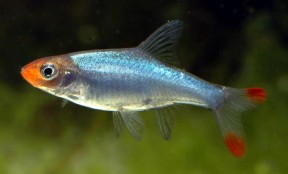
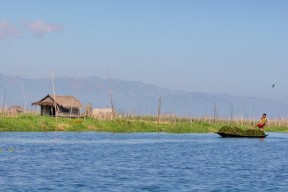

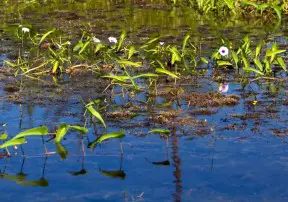
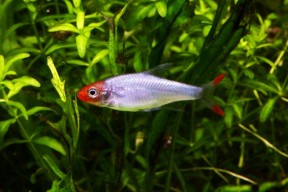


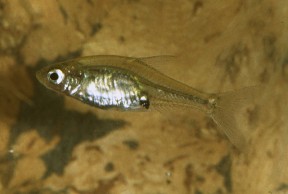
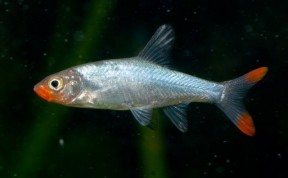
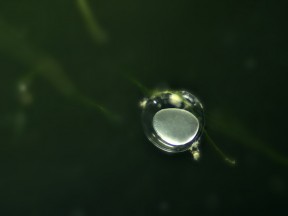
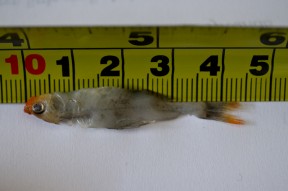


March 15th, 2016 at 4:24 pm
Hello.
Several reports of breeding talk about eggs on the underside of large plant’s leaves, never mops or substrate scattering. I think this is an important information, check “Sawbwa breeding” on your search engine for more information and photos.
March 15th, 2016 at 4:50 pm
Hi Stalker, thanks for the feedback. I’ve edited the text a little.
April 21st, 2016 at 9:23 am
I can confirm that they at least prefer to spawn on the underside of leaves, filter outflow or piece of polystyrene works just fine. I had moss in my tanks by that time, but they never used it. Fry is quite big, but they do not take artemia at first, you need smaller food for 7-10 days.
December 16th, 2016 at 9:55 pm
I am very interested in breeding this species because they are so beautiful and the wild caught fish that are imported do very poorly. In my experience they are difficult to feed and often have internal parasites. I have been trying to breed them for 7 months now.
I keep my adults in a 10 gallon tank, at the moment I have 10 females and 4 males. The water parameters are as follows:
75F
ph 8.0
KH 7
GH 8
I feed the adults live microworms, live blackworms, and flake. They are fed 2 to 3 times per day.
The tank has large gravel substrate and indian almond leaves scattered about. The important part is the floating plants, I use both live Anubias and plastic plants with a similar leaf shape. The Sawbwas have been spawning for 26 days now. The eggs are so small it is hard to see them with the naked eye. What has been working for me is removing the floating broad leaved plants to another tank to hatch and raise the fry. They did not like the spawning mop I provided for them. While one pair will lay eggs others will hunt them. I have not come up with a system to get the best yield however I have at least a dozen fry of varying ages living in the nursery tank. The fry are fed green water, egg yolk, micro worms, and powdered fry food which I mix in the green water. The nursery tank has large gravel, lots of moss, and indian almond leaves.
I am by no means an expert but do want to share what is working for me, I love this fish.